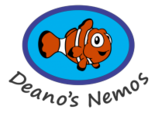As mentioned in a previous post, infants are born with the ability to hold their breath for a short period of time and are very comfortable in a watery environment.
However, they can start to develop a sense of uncertainty or fear of the water from as early as 6 months old. This is why it is crucial to maintain your baby’s water familiarisation.
In this post I will talk about the three positions in which you can place your baby to allow them to experience different sensations while in the water.
First position
In the first position, parents lower themselves into the water, lying on their back. Baby is then placed stomach down on their parent’s chest/stomach in a way that allows them to snuggle and feel close contact with their parent.
The parent then gently pours water from a cup over baby’s back and legs (which, for safety reasons, remain out of the water and on top of their parent’s torso) allowing the baby to feel the warm stimulation of the water running over their skin.
Second position
Once the baby has been introduced to the water in this way, the parent may sit up and cradle their baby in front of them (between their legs).
Supporting the baby with one hand behind their neck/head and the other behind their lower back area, the parent then gradually lowers their baby into the water so that the back of baby’s head and ears are submerged, with their face remaining clear of the water. The back of their head must be supported at all times by the parent. This cradle position allows for face-to-face contact between parent and child.
Once comfortable in this position, the parent may remove their supporting hand at the base of the baby’s spine to allow the baby a greater degree of independence and increased freedom to experience the buoyancy of the water.
Third position
The third position involves the baby being held tummy down in the water with the parent seated. Baby must be constantly supported to keep the mouth and nose clear of the water.
In this position, the parent’s hands are held under baby’s armpit with thumbs pointed skywards. The palms of the hands are rotated upwards to allow the wrists to come together to support baby’s chin and to allow the baby to rest their head on the hands of the parent.
Baby lies in a horizontal position to the water, with their head kept up (supported by Mum or Dad’s hands) and their backside close to the surface of the water. Babies love this prone position because it gives them freedom to move and extend their legs in a motion that is otherwise not possible on land. It also allows the parent freedom to swish baby from side-to-side and back-and-forth. And it even allows baby to push off the end of the bath, which can strengthen the legs of the baby and give them an added sense of security.
Once the child is comfortable in the water in these positions, you can start teaching them breath control via stimulus response which I will talk about in my next post.



